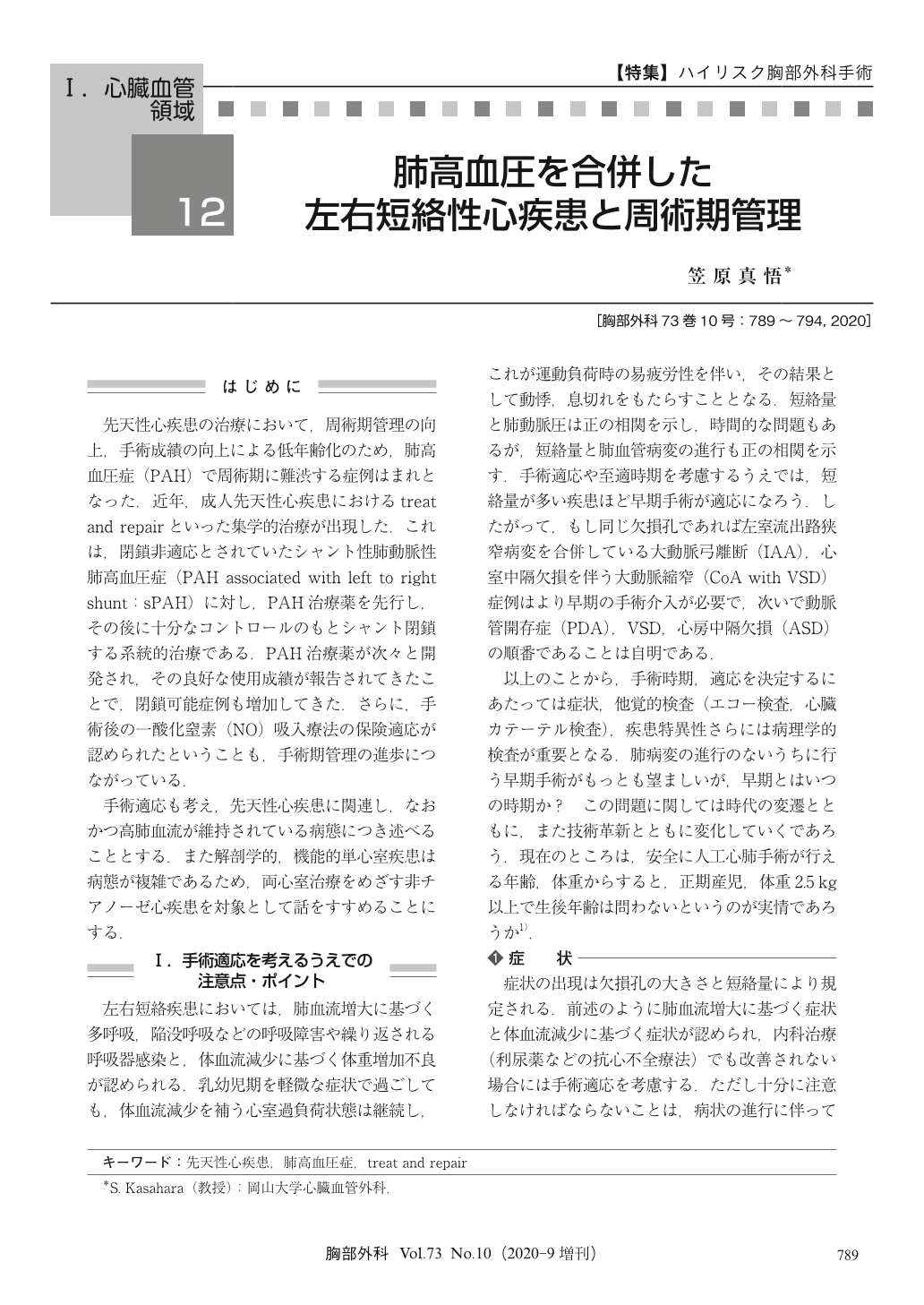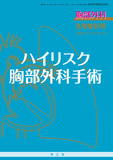Japanese
English
- 有料閲覧
- Abstract 文献概要
- 1ページ目 Look Inside
- 参考文献 Reference
先天性心疾患の治療において,周術期管理の向上,手術成績の向上による低年齢化のため,肺高血圧症(PAH)で周術期に難渋する症例はまれとなった.近年,成人先天性心疾患におけるtreat and repairといった集学的治療が出現した.これは,閉鎖非適応とされていたシャント性肺動脈性肺高血圧症(PAH associated with left to right shunt:sPAH)に対し,PAH治療薬を先行し,その後に十分なコントロールのもとシャント閉鎖する系統的治療である.PAH治療薬が次々と開発され,その良好な使用成績が報告されてきたことで,閉鎖可能症例も増加してきた.さらに,手術後の一酸化窒素(NO)吸入療法の保険適応が認められたということも,手術期管理の進歩につながっている.
A large population of patients with congenital heart disease with untreated systemic to pulmonary shunts (left to right shunts) will develop pulmonary arterial hypertension (PAH). There are 2 different statuses of an increase in pulmonary arterial pressure. One is high resistance due to high pulmonary blood flow (high flow with high resistance), another one is low pulmonary flow due to high resistance (low flow with high resistance). Chronic large left-to-right shunt induced severe pulmonary vascular disease and pulmonary hypertension. This was then subsequence of low pulmonary blood flow with high pulmonary vascular resistance. We have to avoid this situation and have to do intervention within the pulmonary vascular reactivity has been left. For this reason, preoperative treatment for avoidance of high flow, appropriate timing of interventions and postoperative various managements are important factors as aiming of low pulmonary resistance in this group. Recent advances in PAH-specific drugs have dramatically changed the therapeutic strategy for PAH. A strategy that includes “treatment” with PAH-specific drugs initially and then “repair” by closure of the cardiac defect (i.e. “treat and repair”) was devised, and has been attempted, in patients with PAH associated with a cardiac defect.

© Nankodo Co., Ltd., 2020


